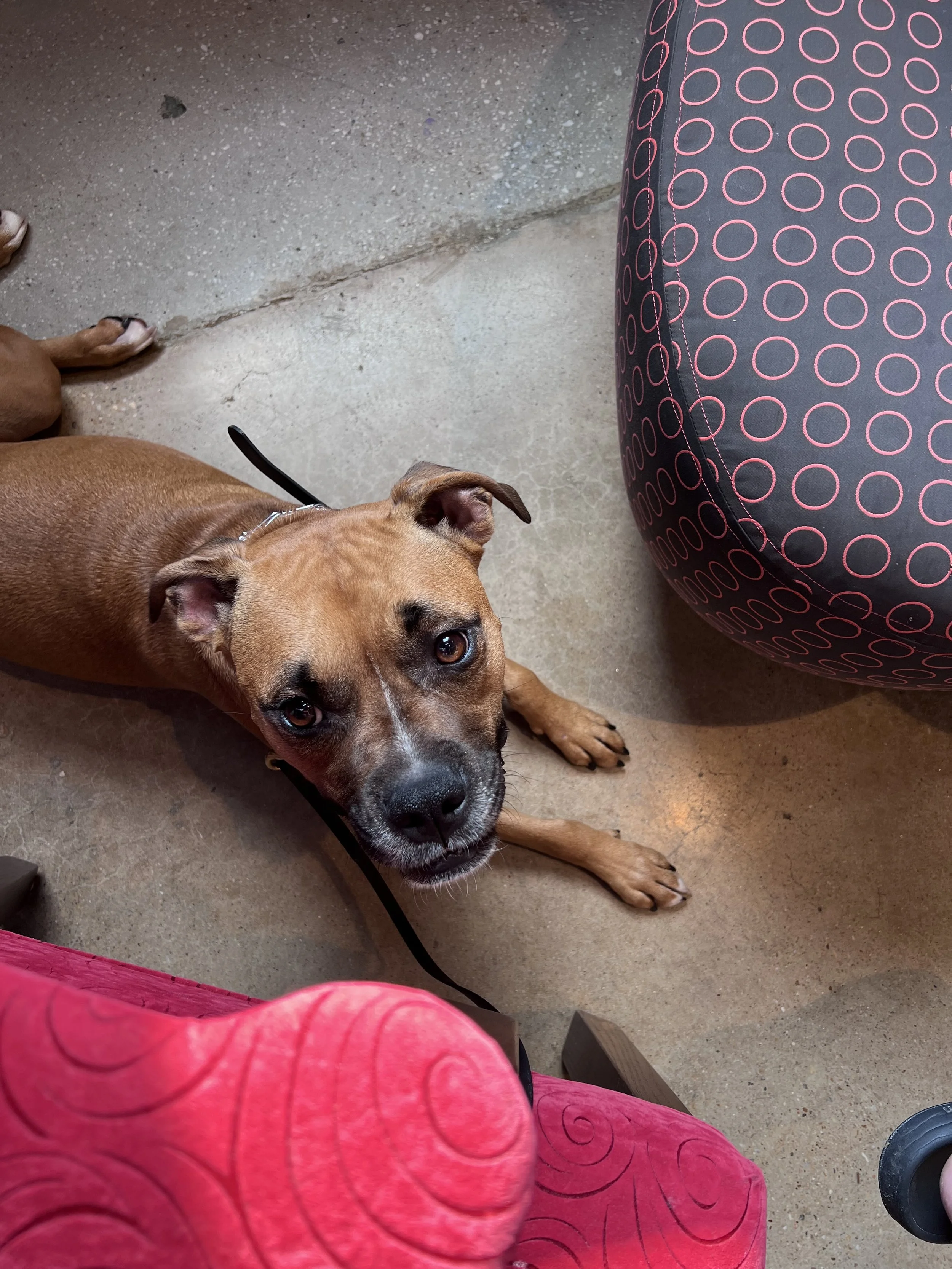As trainers, one of the most important things we teach (beyond obedience) is how to advocate for your dog in real-world situations. For dogs who come to us with fear-based reactivity, like our sweet girl Harper, this step is critical to helping them feel safe and supported as they re-enter daily life with their families.
Harper came to us displaying reactivity rooted in fear. Like many dogs in her shoes, unfamiliar environments and unpredictable interactions were overwhelming. But with time, structure, and a lot of mindful exposure, she’s made incredible progress. As her go-home date approaches, we’ve been proofing her skills in increasingly distracting environments like restaurants, parks, and pet-friendly shops to prepare her and her owners for success outside the training bubble.
Tucking Away: Our Favorite Public Management Strategy
When working with fearful or uncertain dogs in public, our number one priority is spatial awareness. That means “tucking” the dog into a secure, low-traffic spot between our legs, beside a bench, or nestled between furniture. In Harper’s case, we chose a corner table at a restaurant and placed her between two seats with a wall behind us. This setup prevents strangers from approaching from behind and gives us a buffer if anyone gets too close.
The goal is to make it so subtle that people barely realize there’s a dog there. Not only does this reduce the chance of an unwanted interaction, but it’s also exactly what many fearful dogs are hoping for, to go unnoticed, observe from a distance, and feel protected. This type of public behavior training for dogs is key when helping reactive dogs feel secure.
Why Advocating Builds Trust
Teaching a dog that we will handle the world for them is one of the most effective ways to build trust. For dogs like Harper, who have previously felt responsible for their own safety, this shift is powerful. Once they realize they don’t need to manage their environment or react to perceived threats, they begin to truly relax.
It’s also a vital skill for owners. Knowing how to read your dog’s body language, set boundaries with strangers, and create distance when needed can change everything about the experience of walking through the world with a nervous or reactive dog. Advocating for your dog is a lifelong skill that builds the foundation for a calmer, more confident relationship.
Positive Public Encounters
During our outing, one person did approach to ask about Harper. Fortunately, the staff was kind and respectful, and the person gave us plenty of space. It was a great teaching moment for Harper. She saw that we could handle interactions, advocate on her behalf, and keep her safe. You can see in the video how calm she became, simply because she didn’t feel the need to make any decisions herself.
This type of balanced dog training isn't just about obedience. It’s about helping the dog feel understood, supported, and secure in real-life situations.
Helping Your Dog Feel Safe Starts with You
If you have a dog who struggles in public, remember it’s not about pushing them into more exposure. It’s about guiding them through those experiences in a way that builds their confidence. Be proactive about space, clear about boundaries, and consistent with your advocacy. Over time, your dog will learn to trust not just the world around them, but you too.
At Monument City Dog, we specialize in training fearful dogs in Baltimore and beyond. We help dogs build better coping skills and teach their humans how to support them every step of the way.

